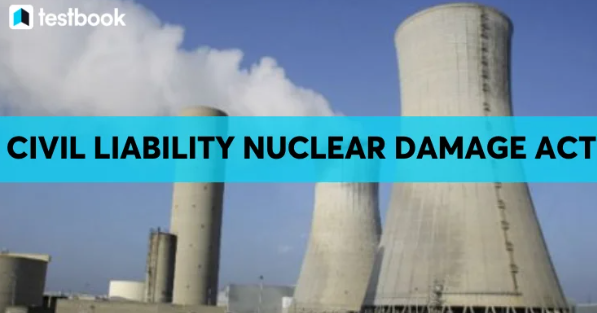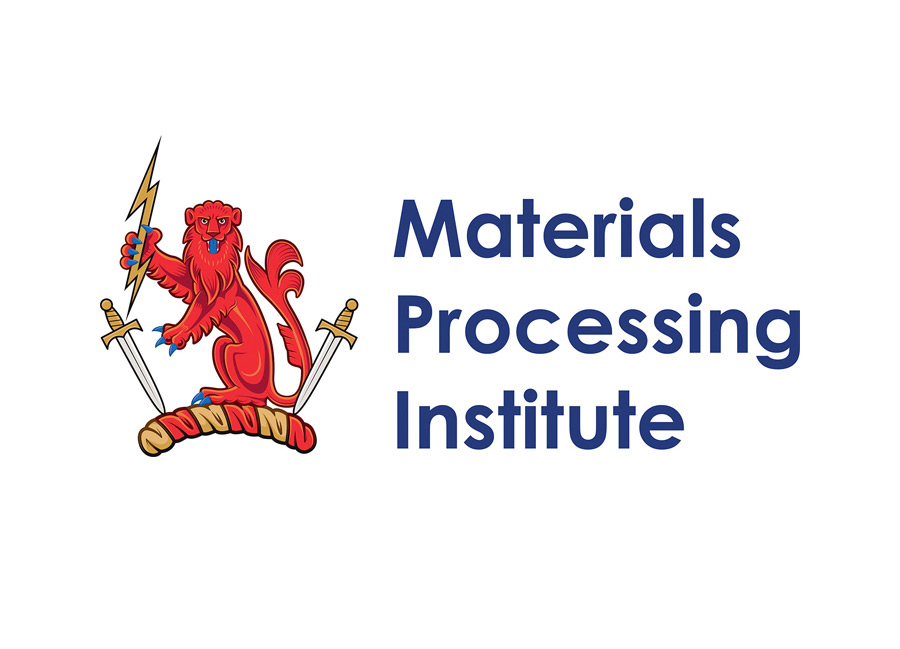Part 1 of 2 Parts
India has talked for decades about making nuclear power a centerpiece of its energy strategy but has made little real progress to date. This year’s federal budget tackled some of the thorniest issues standing in the way of nuclear power expansion. Is nuclear power finally going to get its moment in the world’s most populous nation?
Narendra Modi’s political party won local elections that put it in charge of India’s national capital region for the first time in twenty-seven years. Modi is now the Prime Minister.
India enacted the stringent Civil Liability for Nuclear Damage Act (CLNDA) in 2010 to provide a quick compensation mechanism for victims of a nuclear accident. The Act establishes a strict and no-fault liability for nuclear plant operators. This means that they are liable for damage regardless of fault. However, the operator of the nuclear installation, after paying compensation for nuclear damage shall have the right to recourse if the nuclear incident was caused by the act of a supplier or his employee, which includes supply of equipment or material with patent or latent defects or sub-standard services. Recourse is also available if the nuclear incident has resulted from the act of commission or omission of an individual done with the intent to cause nuclear damage.
The nuclear operator had to maintain a financial security to cover its maximum liability of one hundred and eighty million dollars for civil nuclear damage and the operator had to cover liability through insurance or other financial security.
In case the damage claims exceeded one hundred and eighty million dollars, the gap would be bridged by the Central Government. The government liability amounted to about two hundred and seventy-seven million dollars.
India breathed new life into its decades-old nuclear power ambitions this month when its annual budget proposed amending the stringent liability laws detailed above to permit private investment in the sector – including from foreign companies.
Prime Minister Narendra Modi is expected to discuss nuclear investments by U.S. companies in his meeting with President Donald Trump this week. This is part of a likely packed agenda covering tariffs, arms sales and Indian deportees from the U.S.
India is the world’s fastest-growing major economy and third-largest greenhouse gas emitter. India has said it wants to meet its power needs and carbon reduction targets in part by expanding nuclear power capacity to one hundred gigawatts over the next twenty years, more than twelves times the current eight GW.
However, India’s drive for nuclear power, repeatedly blocked over the years by legal hurdles and a lack of investment, still faces some politically difficult legislative wrangling, as well as the potential for public protests, which have erupted in the past.
Energy think-tank Ember said, “This goal will require significant legislative reforms, particularly to enable private-sector participation through amendments to the Atomic Energy Act and the Civil Liability for Nuclear Damage Act.”
India’s nuclear push coincides with a global realignment of carbon reduction strategies. The number of nuclear projects under construction globally is approaching its highest in thirty years with more than forty countries including Indonesia and the Philippines planning to start or expand nuclear power generation.
Civil Liability for Nuclear Damage Act
Please read Part 2 next
Blog
-

Nuclear Reactors 1477 – India Is Working On Major Expansion Of Nuclear Power – Part 1 of 2 Parts
-
Nuclear News Roundup Feb 12, 2025
Meet the Disabled Vets, Cancer Researchers, and Nuclear Techs Fired by Elon Musk slate.com
South Africa open to Iran, Russia nuclear tech deals semafor.com
Kaptur, Murray Demand Briefing to Congress on Reckless Layoffs Across Department of Energy, Including NNSA, Jeopardizing National Security democrats-appropriations.house.gov
Nuclear, renewables designated as Japan’s main carbon-free energy English.kyodonews.net
-

Geiger Readings for Feb 12, 2025
Ambient office = 100 nanosieverts per hour
Ambient outside = 79 nanosieverts per hour
Soil exposed to rain water = 100 nanosieverts per hour
English cucumber from Central Market = 115 nanosieverts per hour
Tap water = 93 nanosieverts per hour
Filter water = 80 nanosieverts per hour
-

Nuclear Fusion 110 – U.K. Atomic Energy Authority Develops New Steel Alloy To Withstand Conditions Inside A Nuclear Fusion Reactor
A breakthrough in high-performance steel could remove one of the biggest obstacles to fusion energy which would bring the dream of unlimited clean power one step closer to reality.
Scientists at the U.K. Atomic Energy Authority (UKAEA) have succeeded in producing fusion-grade steel on a large scale. This is a major step toward making nuclear fusion a practical, cost-effective energy source.
One of the most serious challenges in getting fusion energy to work is to find materials that can survive the extreme heat and radiation inside a nuclear fusion reactor. Scientists at UKAEA’s Neurone consortium have developed a new type of steel alloy that can take temperatures up to twelve hundred degrees Fahrenheit and withstand heavy neutron exposure.
The new steel alloy is called fusion-grade Reduced-Activation Ferritic-Martensitic (RAFM) steel, a specialized material built for fusion reactors. This breakthrough, when produced at an industrial scale, could cut production costs by up to ten times. Lower costs are one of the keys to making fusion power plants commercially viable and speeding up their development. This could eventually stabilize energy prices and be affordable for consumers, particularly in regions where traditional energy infrastructure is expensive to maintain.
The Neurone consortium, a fifteen-million-dollar initiative, produced five- and one-half tons of fusion-grade steel using a seven-ton electric arc furnace at the U.K.’s Materials Processing Institute. This is the first time RAFM steel has been produced on such a big scale. It indicates that existing industrial facilities can handle making materials for fusion energy.
Dr. David Bowden leads materials science at UKAEA. He said in a UKAEA press release, “One of the major challenges for delivering fusion energy is developing structural materials able to withstand the extreme temperatures (at least up to twelve hundred degrees Fahrenheit) and high neutron loads required by future fusion powerplants.”
Fusion energy may not be lighting up homes just yet, but this new steel alloy could begin being tested in prototype fusion reactors within the next decade, according to UKAEA. If the steel survives testing and works for constructing nuclear fusion reactors, in the next twenty to thirty years, fusion energy could go commercial and potentially transform businesses, factories, and entire cities with a constant, carbon-free power source that doesn’t depend on dirty energy.
Fusion power is often referred to as the ultimate clean energy source because it could provide endless electricity without pollution or the long-term radioactive waste that comes with traditional nuclear power.
For fusion energy to really take off, it will have to fit into existing power grids alongside other clean energy technology. Improved energy storage, like next-generation batteries and hydrogen fuel, could help smooth out power from fusion reactors and keep the grid stable and efficient.
At the same time, big industries are looking for ways to reduce their carbon output with electrification and carbon capture. Fusion could change the way industries operate in this transition by providing a steady and reliable clean energy source.
UKAEA and its Neurone consortium are moving fusion energy closer to reality. With breakthroughs like next-generation steel alloys addressing key technical challenges, the possibility of unlimited, pollution-free power is nearly here.
Materials Processing Institute -
Nuclear News Roundup Feb 11, 2025
Milestone for metallic fuel fabrication world-nuclear-news.org
Trump open to Iran talks only if it abandons nuclear program, says US official iranintl.com
Iowa nuclear plant seeks unprecedented restart thegazette.com
Saudi Arabia seeks to mediate between Trump and Iran on new nuclear deal cnn.com
-

Geiger Readings for Feb 11, 2025
Ambient office = 66 nanosieverts per hour
Ambient outside = 97 nanosieverts per hour
Soil exposed to rain water = 103 nanosieverts per hour
Campari tomato from Central Market = 73 nanosieverts per hour
Tap water = 108 nanosieverts per hour
Filter water = 96 nanosieverts per hour
-

Nuclear Reactors 1475 – Naarea Announces Collaboration With Phoenix Manufacture On The Design And Manufacture Of Its XAMR Molten Salt Microreactor
French microreactor developer Naarea is going to collaborate with Phoenix Manufacture, a company which specializing in the industrialization of complex devices, to work towards the mass production of Naarea’s XAMR molten salt fast microreactor.
The aim of this collaboration is to structure the industrialization of the XAMR, integrating the key phases of the project including design, prototyping, first-of-a-kind (FOAK) manufacturing and mass production. In order to meet these challenges, Naarea and Phoenix Manufacture will employ technologies such as 3D printing and design a joint plant including specially designed spent nuclear fuel reprocessing facilities.
Phoenix Manufacture is based in Niort, western France. It specializes in industrial precision engineering and the design and manufacture of mechanical systems for the military, nuclear, petroleum, aerospace and robotics sectors.
The partnership between Naarea and Phoenix Manufacture intends to implement industrial solutions for the phases of development of the XAMR. They will focus especially on prototyping, FOAK production and mass production.
The collaboration is based on five phases extending to 2032. The first phase includes validation of raw materials and the manufacturability of parts designed by Naarea for additive manufacturing. The second phase consists of prototyping the components of the XAMR microreactor. The third phase is series production, including providing the necessary parts for the FOAK and mass production. The fourth phase involves scaling up production capacity, including studying the creation of a joint production facility for XAMR components, pooling of resources and mutual skill development. The fifth and final phase will be the evaluation of solutions for recycling and recovering waste material resulting from production and the recycling of used components.
Jean-Luc Alexandre is the founder of Naarea and CEO. He said, “We have chosen to rely on the expertise and skill of Phoenix Manufacture, a French company that will contribute to the design of an XAMR microreactor made in France. Incorporating additive manufacturing represents a major asset for us: it will allow us to produce parts with consistent quality controlled in situ at each step of the manufacturing process. Additive manufacturing also makes it possible to lower production costs, reduce assembly needs and meet the highest standards in terms of safety and security, which remains our absolute priority.”
Marco Calcamuggi is the co-founder of Phoenix Manufacture and CEO. He said, “We are proud of this strategic partnership with Naarea, since additive manufacturing is at the heart of our vision for French reindustrialization. We firmly believe that this disruptive technology is profoundly transforming all industries, in particular, the nuclear sector.”
Naarea was formally established in November 2021. It says that its ultra-compact molten salt fast neutron reactor will use “the untapped potential of used radioactive materials, and thorium, unused mining waste”. Once it finishes the eXtra Advanced Nuclear Reactor (XAMR) design, the company intends to explore applications in areas such as transportation, agriculture and smart buildings.
Naarea says that its reactor is compact in size and there is no need for it to be grid-connected. The XAMR can “be deployed as close as possible to regions, to match energy demand as closely as possible and allow the control of security of supply, at the service of industries and communities”. Each XAMR can generate forty megawatts. Naarea expects its first XAMR to be produced by 2030.
Earlier this month, Naarea announced a strategic partnership with advanced energy management platform QGEMS set to commence in 2025. The partnership is aimed at integrating QGEMS’ technology to optimize Naarea’s energy production and distribution. In addition, Naarea said that using QGEMS’ advanced energy management system could extend the applications of its reactor to data and AI centers, commercial properties, industrial facilities and remote territories.
Naarea -
Nuclear News Roundup Feb 10, 2025
Newcleo seeks to buy land for demonstration SMR world-nuclear-news.org
Proposal to reverse Spain’s nuclear phase-out approved by parliament world-nuclear-news.org
Rubio meets Netanyahu, vowing ‘there can never be a nuclear Iran’ i24news.com
Maryland Environmental Leaders Slam Legislative Push for Gas-Powered Plants, Split Over Nuclear Energy insideclimatenews.org
-

Geiger Readings for Feb 10, 2025
Ambient office = 116 nanosieverts per hour
Ambient outside = 87 nanosieverts per hour
Soil exposed to rain water = 91 nanosieverts per hour
Blueberry from Central Market = 115 nanosieverts per hour
Tap water = 108 nanosieverts per hour
Filter water = 96 nanosieverts per hour
-
Nuclear News Roundup Feb 09, 2025
Gov. Lee pushes toward nuclear energy with funding for potential small modular reactor wkm.com
Kremlin dismisses Ukraine’s accusation that Russia attacked Chernobyl nuclear plant voanews.com
2 GOP state lawmakers pushing to advance nuclear energy in Wisconsin wpr.org
Nuclear Stocks Surged Last Year. Are They A Buy Amid DeepSeek Concerns With Earnings Upcoming? Investor.com
